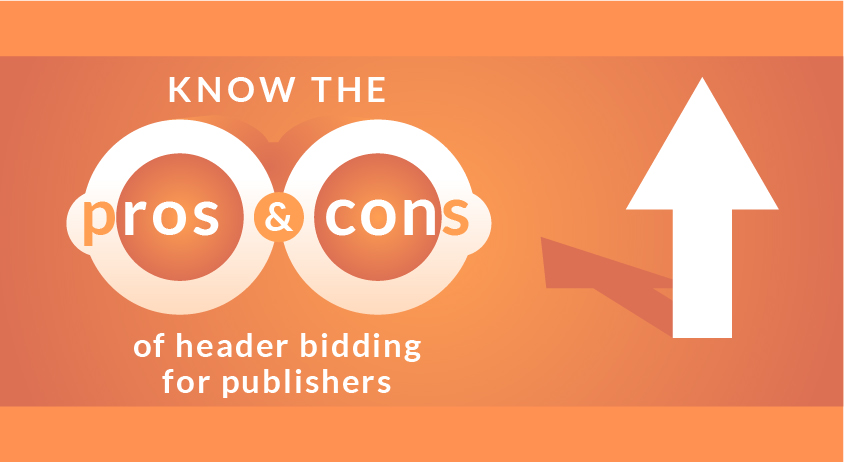Know the Pros and cons of header bidding for Publishers

What is header bidding?
Header bidding, known as pre-bidding or advanced bidding, is a smart technique used in programmatic advertising and is an alternative to the Google “waterfall” model. It allows advertisers to contest in the reserved and unreserved inventory of publishers through an action that is external to the ad server.
To understand the advantage of header bidding, let’s understand the typical process for filling inventory.
The typical process in filling inventory
The ad server is contacted by your site. Importance is given to direct-sold inventory while program-driven inventory takes a back seat. The site’s ad server serves the available inventory. For instance, let’s assume that Google DoubleClick is chosen as an ad server in a waterfall sequence. This process prioritizes unsold inventory to the top-ranked ad exchange and the rest follows.
While the ranking is determined based on the size, there lies a disadvantage. The biggest ad exchanges may not be willing to pay the highest price, every time. So, if the inventory is not assigned to the highest bidder, the publishers have to face lower total revenue.
Google further complicates the inventory allocation with its Google Ad Exchange (AdX) where the Google DFP features a setting using which, they can outbid the highest bidder by as low as a penny. This gives a shortcut to win auctions because typically AdX gets the last bid.
Advantages of header bidding
Publishers will greatly benefit from header bidding because instead of the traditional Google strategy, they can have auction from all bidders simultaneously. The advantages of using header bidding, are listed below:
- Publishers can choose the bidders and prefer particular advertisers over others, in the auction.
- Publishers can increase revenue by increasing the prices of their premium inventory.
- Relying on a single supply-side platform (SSP) caused less yield before. With header bidding, impressions can be allocated smartly and fill rate can be increased as well.
- Reporting discrepancies are avoided because only a single auction happens in a header bidding.
- Header bidding is transparent and so, advertisers can make informed decisions after knowing the inventory and the prices. If they want premium inventory, they need to bid high enough.
- Whether AdX is used or not, equal accessibility for all advertisers is ensured.
Disadvantages of header bidding
- Scripts are required for header bidding which may cause a slight delay in the page loading time.
- Client-side header bidding requires code changes and browser compatibility should be ensured.
- Duplicate bids is a common issue faced when implementing client-side and server-side header bidding because the publisher may use of multiple header partners.
Conclusion
Header bidding proves to be beneficial to both advertisers and publishers. The real boom happened in 2015 and later, publishers started adopting it for videos and mobile platforms.
The launch of First Look by Google to all DFP clients in 2016 allowed publishers to include programmatic bids before an ad request is sent from the site to the ad server. This created some impact but until 100% market share is held by Google, there’s enough opportunity left to use header bidding smartly.